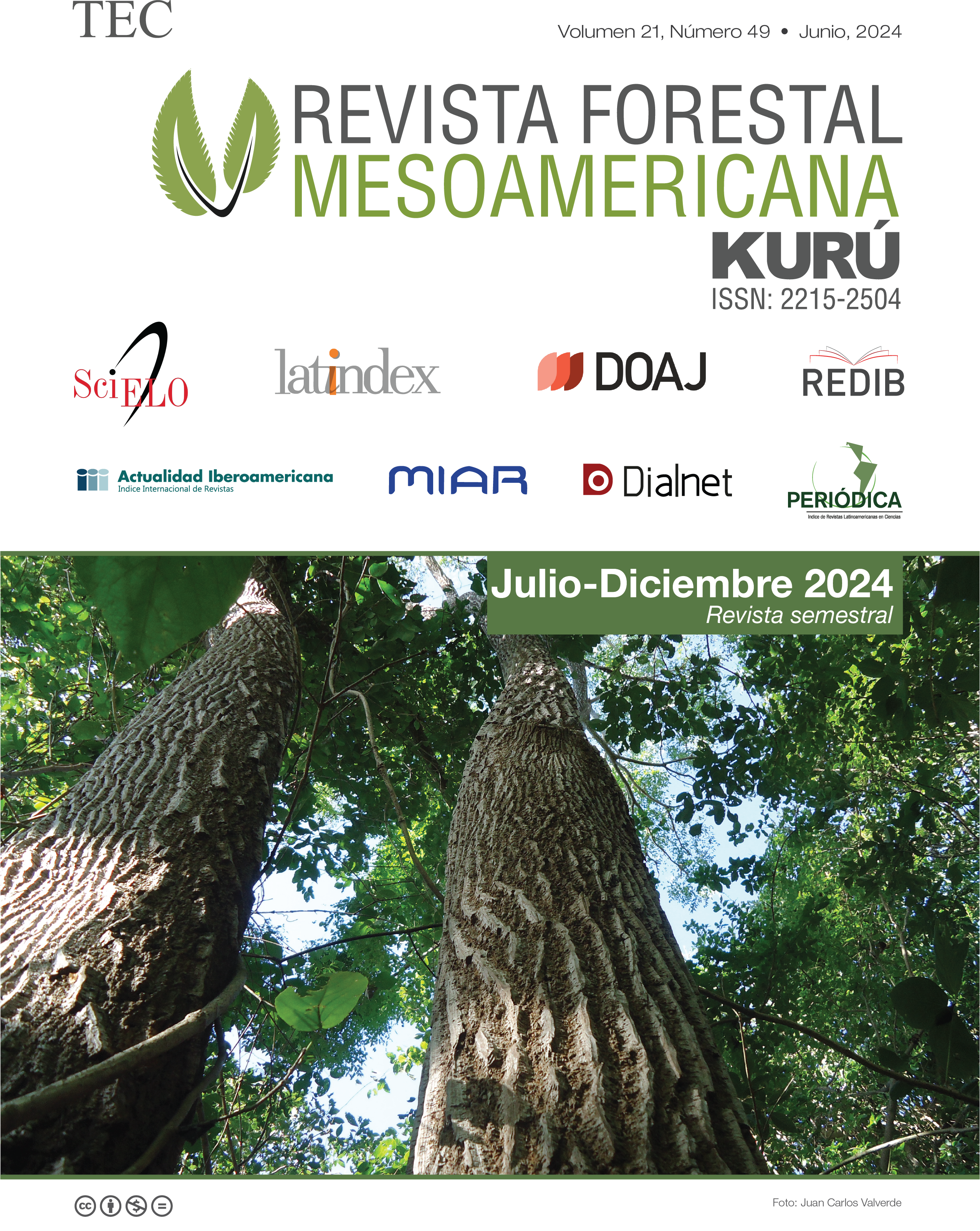Flexible Form Factor for More Accurate and Less Biased Volumetric Estimates: A Case Study of Eucalyptus spp.
Main Article Content
Abstract
Eucalyptus species are widely cultivated in Brazil due to their high productivity, relatively short rotation cycle, and the variety of products they offer. The estimation of tree volume is commonly done using the artificial form factor (real volume / cylinder volume). However, this method may result in inaccurate and biased estimates, leading to incorrect decisions in plantation management. This study describes a flexible form factor and some considerations for its implementation for different species. The Smalian method was used to determine the real volumes in 2198 eucalyptus trees. The artificial form factor and the flexible form factor of Silva, Borders and Brister were estimated with their proportionality constants determined using probability density functions. The artificial form factor, estimated at 0.53, produced inaccurate and biased volume estimates, whereas the flexible form factor, with a constant of 0.55, produced accurate and unbiased estimates.
Article Details

This work is licensed under a Creative Commons Attribution-NonCommercial-NoDerivatives 4.0 International License.
Revista Forestal Mesoamericana Kurú is licensed under CC BY-NC-ND 4.0
Al enviar un artículo a la Revista Forestal Mesoamericana kurú (RFMK), los autores ceden los derechos patrimoniales a la editorial de la RFMK una vez su manuscrito haya sido aprobado para publicación, autorizando a la RFMK a editarlo, reproducirlo, distribuirlo, y publicarlo en formato físico y/o electrónico. La titularidad de los derechos morales sobre los trabajos objeto de esta cesión seguirá perteneciendo a los autores.

